Religions and Festivals
City of Gods/Deities
As a result of its geographical location Tainan became an important destination for foreign merchant ships. Moreover, the arrival of Dutch ships and colonial rule established Tainan as a multi cultural melting pot, one where a diversity of religious beliefs came to coexist. Every year a wide range of local custom-based festivals are held, many of which are a focal point for folk beliefs nationwide. The city’s rich collection of temples, ancestral halls and festivals not only highlights the unique cultural heritage of Tainan, they are also a major attraction for local and foreign visitors looking to experience first hand the unique culture and customs of Tainan.
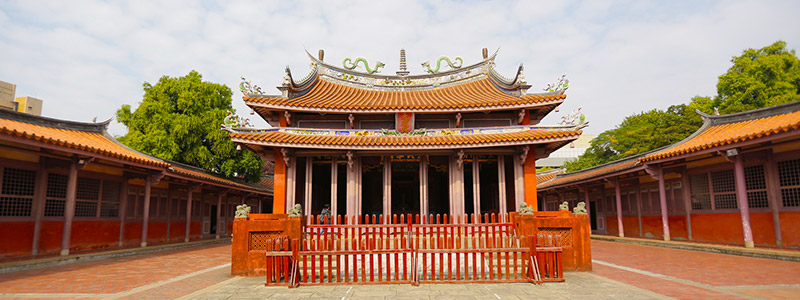
Nine Main Temples – Museums showcasing centuries of artifacts
In thee early days the city of Tainan was full of folk temples, adding a sense of unadorned simplicity that is a rare treasure in its own right. Several of these are official temples with many concentrated in the West Central District of Tainan City. Moreover, each temple is like a history museum filled with centuries of anecdotes about the old city.
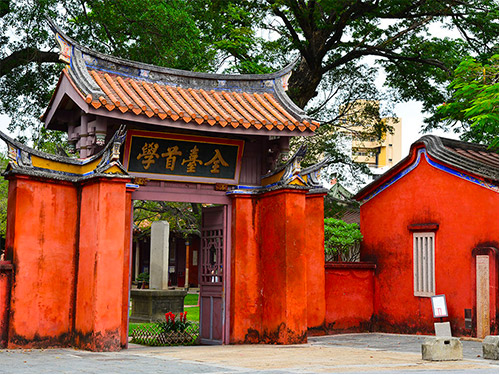
Tainan Confucius Temple
The Tainan Confucius Temple was built in 1665 and is the oldest Confucius temple in Taiwan. In the early years, after the Qing Dynasty re-took control of Taiwan, children from all over the island started there education here. As such, it became known as the No. 1 School in Taiwan and a listed historical building.
Location
Opening Hours: 08:30 – 17:30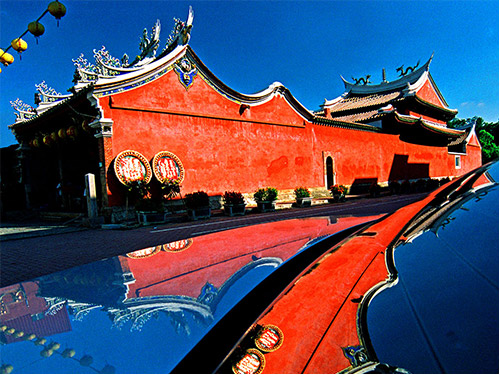
Sacrificial Rites Martial Temple
The Sacrificial Rites Martial Temple is also known as Grand Guandi Temple, while the Kaijiwu Temple at No. 144 Xinmei Street is called the Lesser Guandi Temple. The Michelin Guide classifies the Sacrificial Rites Martial Temple as a three star tourist sight.
Location
Opening Hours: 06:00 – 21:00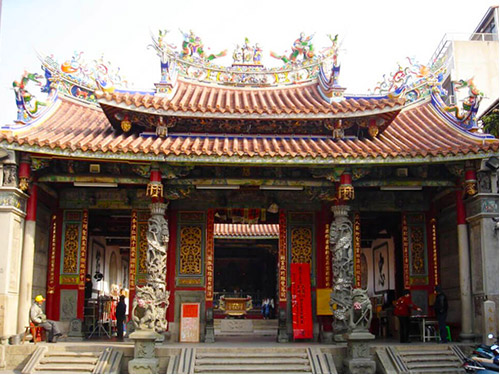
Tainan Grand Matsu Temple
This is a Taoist temple consecrated to Matsu. The predecessor to this temple was the official residence of Prince of Ningjing, Ming Dynasty heir Zhu Shuigui. In 1683, it was transformed into a Matsu Temple and is now a listed historical building.
Location
Opening Hours: 06:00 – 21:00
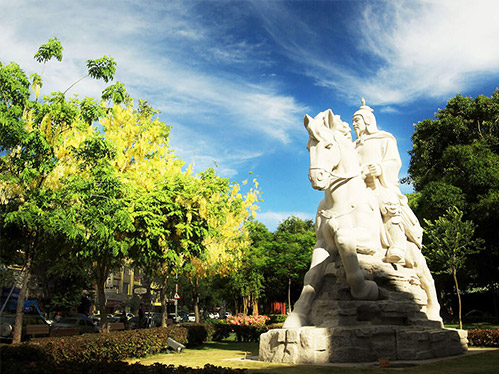
Koxinga Shrine
Built during the reign of Qing Emperor Tongzhi (1856-1875), this shrine was dedicated to Koxinga and his military officers. The site is more than 9,400 ping in size (about 29,800 square meters), with refined and elegant garden buildings, making this a rare example of a "Fuzhou style" temple building in Taiwan.
Location
Opening Hours: 08:30 – 17:30
Taiwan Fu City God Temple
Taiwan Fu City God Temple was built in 1669, making it the oldest and traditionally most important City God Temple in Taiwan.
Location
Opening Hours: 06:00 – 21:00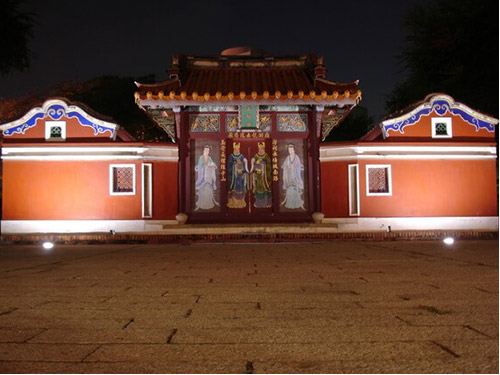
Temple of the Five Concubines
Built in 1977, this temple has a single entrance, one courtyard and two side "dragon-style" building. Its single open main hall is holds idols and is consecrated to the five concubines, with the wall behind the idols inlaid with a memorial stone that reads "Grave of the Five Concubines of the Ningjing Prince in Death."
Location
Opening Hours: 08:00 – 17:00
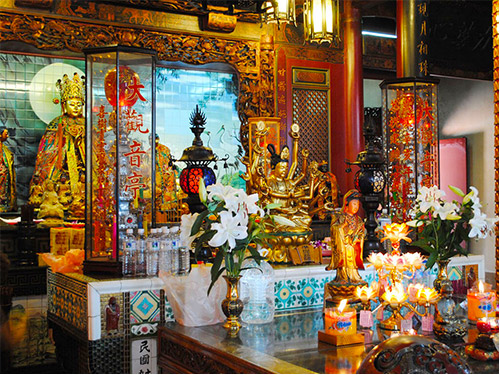
Da Guanyin Temple (Grand Guanyin Temple)
This temple was built from 1647-1683 or earlier and since ancient times has also been known as "Taijiang Zumiao" (Taiwan ancestral temple). It is one of the oldest temples consecrated to the worship of Guanyin Buddha in Taiwan.
Location
Opening Hours: 05:00 – 21:00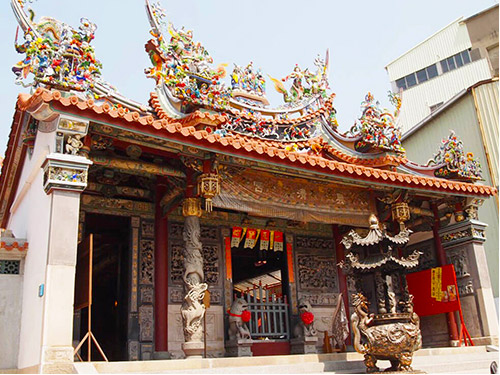
Official Xingji Temple
Baoshendadi (Baosheng Emperor) was celebrated for his medical skill and charitable work helping others. He was later honored as the God of Medicine and became a Taoist deity in the southern Fujian area of China. Today it is one of the main folk religion deities in Taiwan.
Location
Opening Hours: 05:00 – 21:00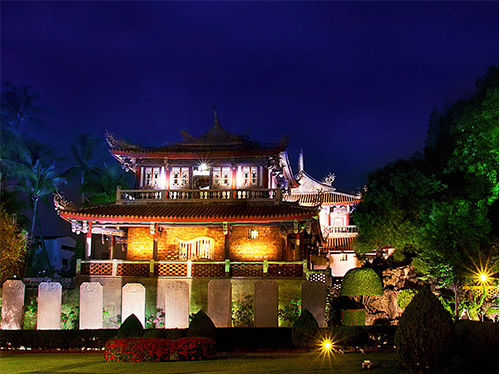
Chihkan Tower (Fort Provintia)
The predecessor to this structure was the European style building Fort Provintia, which was built in 1653 (known by locals as the "barbarian building") and served as the government center for the control of Taiwan. Today it is a nationally recognized historical building.
※Ticket for Chikan Tower is required for access.
Location
Opening Hours: 08:30 – 21:30
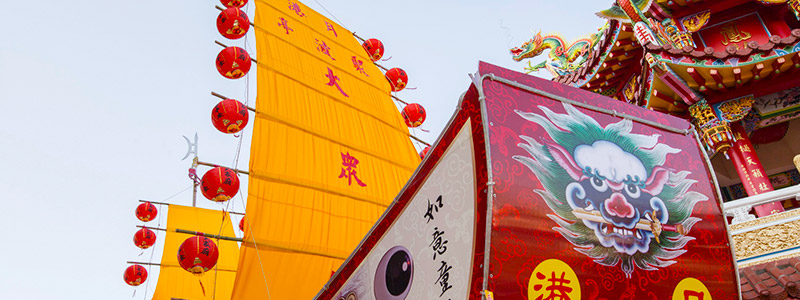
Folk religion and places of spiritual tranquility
In addition to its many official temples, Tainan City is also home to many folk temples, Buddhist temples, founding father temples, religion halls and ancestral halls, a perfect example of the extent to which various religious schools and folk religions coexisted in the early years of Tainan. Visiting these different temples and ancestral halls one can hear many interesting ancient legends that passes folk beliefs from one generation to the next.
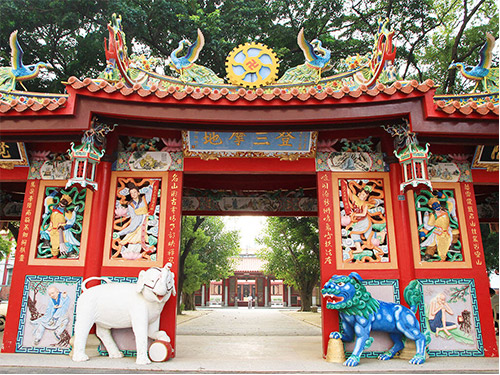
Buddhist temples
Tainan has seven major Buddhist temples – Kaiyuan Temple, Longshan Temple, Jhong-Cing Temple, Mituo Temple, Fahua Temple, Chuhsi Temple and Huangbo Temple. Of these, Kaiyuan Temple, established during the reign of Qing Emperor Kang Xi, was originally called Haihui Temple and is the oldest official temple established in Taiwan. Today it is a nationally designated historical building, while Fahua Temple is a special municipality designated historical building. These two temples have played an important role in the development of modern Buddhism in Taiwan.
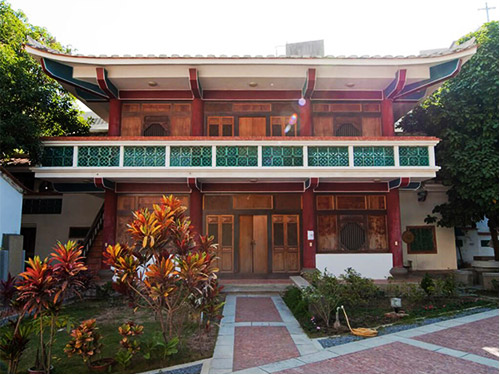
Religion halls
Zai Religions are one school of folk religion passed on by practitioners who practice its tenets at home, which is why it is sometimes called "Home Buddhism". Religious halls are where believers of this folk faith hold gatherings and ceremonies. There are four main religious halls in Tainan – Dehua Hall, Baoan Hall, Zexian Hall and Xihua Hall.
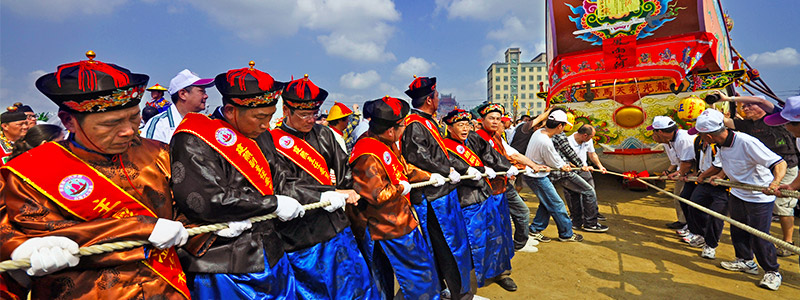
Sacrificial blessings – Local customs in Tainan
Tainan is popularly known as a "city of culture" and part of that is reflected in the passion and diversity with which folk festivals are celebrated at local temples throughout the year. Moreover, the folk festivals handed down by different religions and folk beliefs have added to and enriched local culture. Each one of these festivals has its own distinctive history, but most revolve around a rich variety of blessings, combating natural disasters and reunions unparalleled in Taiwan.
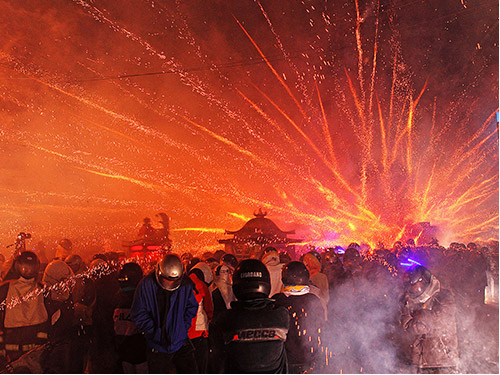
Yanshui Beehive Fireworks Festival
Period: Lantern Festival - 15th day of the Lunar New Year
Place: Wu Temple, Yanshui
During the reign of Emperor Guang Xu in Qing Dynasty, Yanshui was hit by plague and local residents prayed for a miracle. One night they paraded around town setting of firecrackers until sunrise. When the parade finished the plague had ended and the locals thanked the Gods. Ever since, a parade has been held every Lantern Festival evening, evolving into the renowned Yanshui Beehive Fireworks Festival.
Luermen Mazu Temple International Fireworks Festival and Lantern Festival
Period: Lantern Festival - 15th day of the Lunar New Year
Place: Orthodox Luermen Mazu Temple
Every year on the eve of Lantern Festival, the Luermen Mazu Temple invites international fireworks exhibition champions to hold put on shows in the square in front of the temple. Past participants have included Japan's Hosoya Fireworks Co Ltd., Switzerland's BU, Japan Fireworks Artists Association and Taiwan San Tai Fireworks.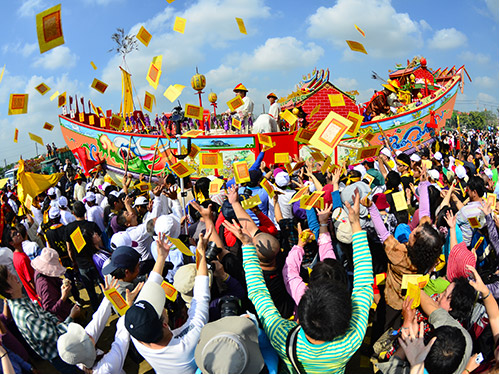
King Boat Ceremony at Sucuo neighborhood, Anding District
Period: Once every three years, third month of the lunar calendar
Place: No. 456 Changxing Temple, 293-2 Zhenhu Temple, Sucuo neighborhood
The Anding District Sucuo King Boat Ceremony is one of the major annual celebrations held locally. Sucuo is home to the Wufu Qiansui deity at Zhenhu temple, 12 Wenwang Daitian Xunshou (Patrol on behalf of the Heavenly God) and two Wangye from Zhuangtou at Changxing temple, making it a unique location. During the third month of the lunar calendar every third year King Boat Ceremony (boat burning) are held, Changxing temple on the bank of the Zengwen River to the north and Zhenhu temple on an empty plot of land close to the temple.
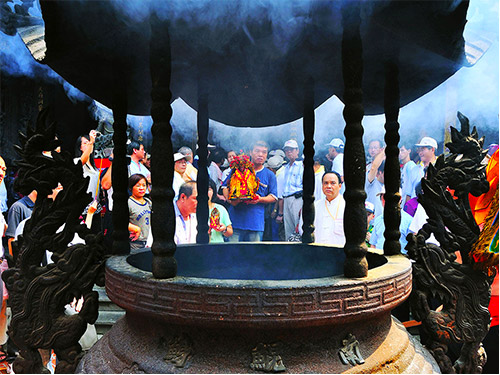
Nankunshen Daitian Temple Wufu Qianshui Pilgrimage
Period: Fourth, sixth, eighth and ninth months of the lunar calendar
Place: Nankunshen Daitian temple
Nankunshen Daitian temple is the largest Wangye temple in Taiwan. Every year on the eve of the birthdays of the Five Wangye (Five Lords) – 26-27th days of the fourth month, 28th day of the sixth month, 15th day of the eighth month and 15th day of the ninth month in the lunar calendar – the largest Wangye festivals are held. On such occasions, the faithful, pilgrimage groups from Wangye temples and Jitong (youth diviners) from around the country gather to celebrate.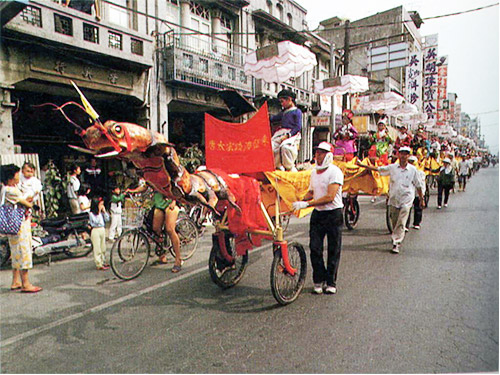
Madou Incense Offering Procession (Madu Daittian temple)
Period: Once every three years
Place: Madou Daitian temple
The Madou Incense Offering Procession is held by Madou Daitian temple once every three years and attended by local and branch temples. The procession is large in scale and known as one of the largest Temple gatherings in southern Taiwan.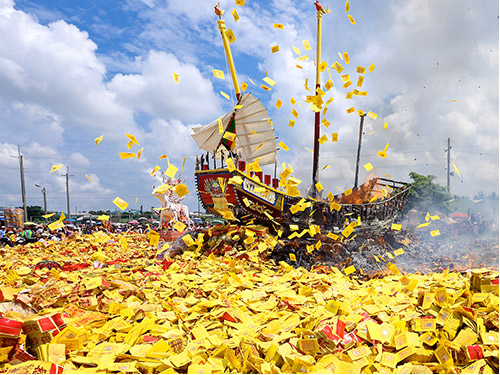
Xigang Pilgrimage Procession (Xigang King Boat Burning Festival)
Period: Middle of the fourth month in the lunar calendar, once every three years
Place: Xigang Qingan temple
The King Boat Burning Festival is a major festival celebrated by Xigang Qingan temple. The event involves a pilgrimage procession, the Wangjiao ritual, inviting Luermen Mazu, transporting Mazu and the ritual ceremony reaches its climax on the final day with the burning of the king boat.
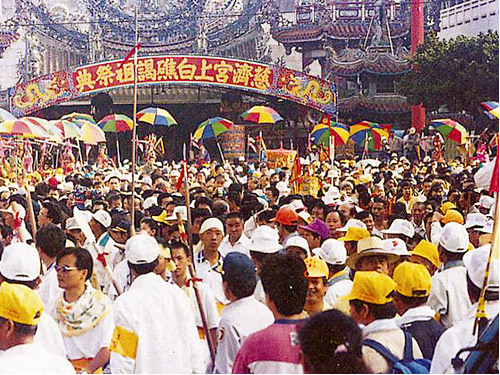
Xuejia Pilgrimage (Ciji temple returns to Baijiao)
Period: An annual pilgrimage procession, with a three day pilgrimage every four years
Place: Xuejia Ciji temple
The scale of the "Back to Baijiao" event makes it one of the largest ever in Taiwan. It is organized by Ciji Temple in Xuejia Town, with a dazzling array of parade troupes and floats in attendance. Some of the art parades such as the 12 Old Sisters and Centipede Procession are rarely seen at Taiwanese folk events.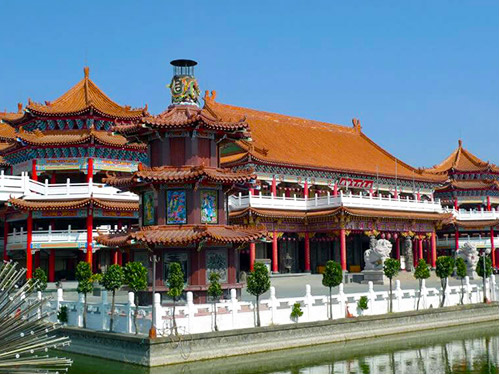
Tucheng Pilgrimage Procession (Orthodox Luermen Mazu Procession)
Period: Third month of the lunar calendar, once every three years
Place: Orthodox Luermen Mazu temple
"Incense serving" (Yi Xiang) is a term used in south western coastal areas of Taiwan to denote a deity on a tour of inspection and involves a pilgrimage procession that can be 3-4 days in duration. In 1961, Orthodox Luermen Mazu temple broke with the Xigang Pilgrimage Procession and organized its own event.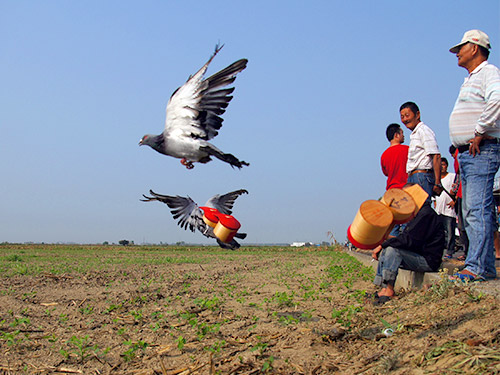
Pigeon Competitions
Period: End of the second month to middle of the fourth month of the lunar calendar
Place: Coastal areas including Qigu, Beimen, Yanshui and Xuejia
Pigeon competitions are a rural past time that can be traced back to Fujian Province in China. In these competitions, pigeons carry a predetermined number of Ling made out of white wood or bamboo and how far the birds fly is measured. Each round the weight carried by the bird is increased until it is unable to fly, determining the result. This event has been held in Xuejia Town for several hundred years.
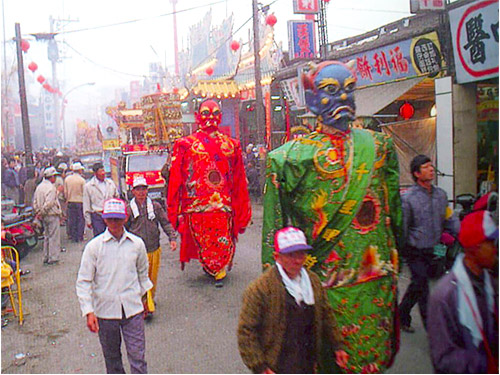
Xiaolong Pilgrimage Procession (Jiali Jintangdian temple Pilgrimage Procession)
Period: First month of the lunar calendar, once every three years
Place: Jintangdian temple
Xiaolong Pilgrimage Procession is an ancient Temple Fair in Tainan that has been revived in recent years. In terms of size and attendance it has a major impact on the local community and together with the Xuejia and Xigang pilgrimage processions is one of the largest traditional temple fairs.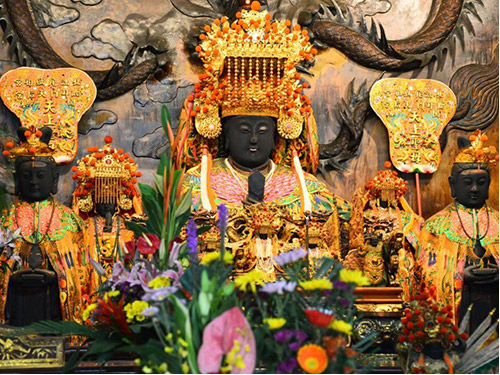
Luermen Mazu Temple Taiwan Culture Festival
Period: Third month of the lunar calendar, once every three years
Place: Luermen Mazu Temple
Luermen Mazu Temple held the first Taiwan Culture Festival in 1993 and has continued to do so ever since. In terms of content the festival includes the giving of auspicious old-styled coins and greeting the Gods, with many traditional performances and activities, as it seeks to promote and continuing traditional culture.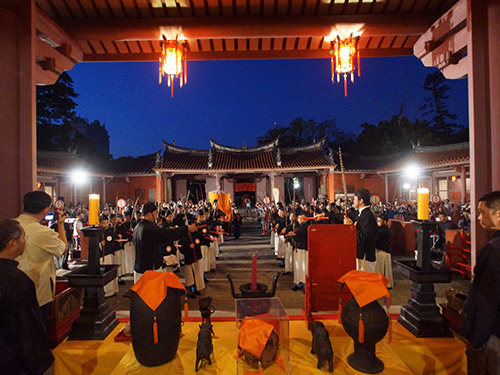
Tainan Confucius Temple Cultural Festival
Period: September 28
Place: Tainan Confucius Temple
This is an event to worship the Great Sage Confucius also known as the Confucius Ceremony. It includes music, dance and the offering of livestock and wine as an expression of respect for Confucius. Main activities include: Autumn festival worship, music salon, Confucius temple musical instruments, ritual artifacts exhibition, guided tours of the temple, six classical arts events (rites, music, archery, riding, writing and arithmetic), Mingluntang lectures, children’s painting activities, readings from the classics etc.

Tainan Mazu Festival
Period: Around the twenty-third day of the third month in the lunar calendar
Place: Tainan Grand Mazu Temple
The Tainan Mazu Festival originated under the rule of the Qing Dynasty and was the first Mazu Pilgrimage Procession event. When the Mazu idol from the Grand Matzu Temple embarks on an inspection tour, official temples send parade troupes and divine palanquins to take part, making the event even more impressive and solicit peace.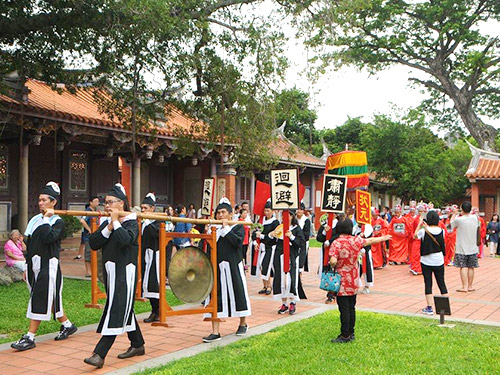
Coming of Age Ceremony
Period: Seventh day of the seventh month in the lunar calendar
Place: Kailong Temple
Kailong temple is consecrated to Qiniangma and every year on the seventh day of the seventh month in the lunar calendar a coming of age ceremony is held, a traditional custom found only in Tainan.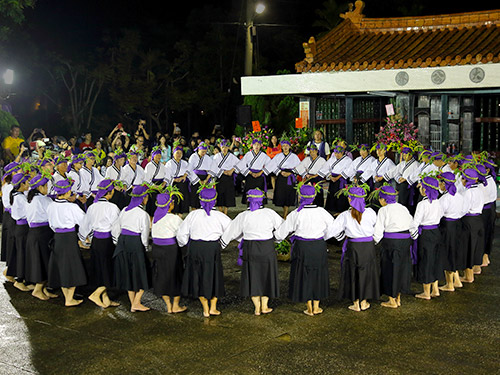
Siraya Night Festival
Period: Ninth and tenth month in the lunar calendar
Place: Dongshan District Kabuasua, Danei District Toushe, Baihe Liuzhong River, Jiali Town Beitouyang, Longtian Borough Fuxing temple
The Alizu Night Festival is an annual celebration held by the Siraya people. In addition to being a celebration of the birth of Alizu, it is also an expression of thanks and blessings. The ritual is conducted in accordance with the seasons.
